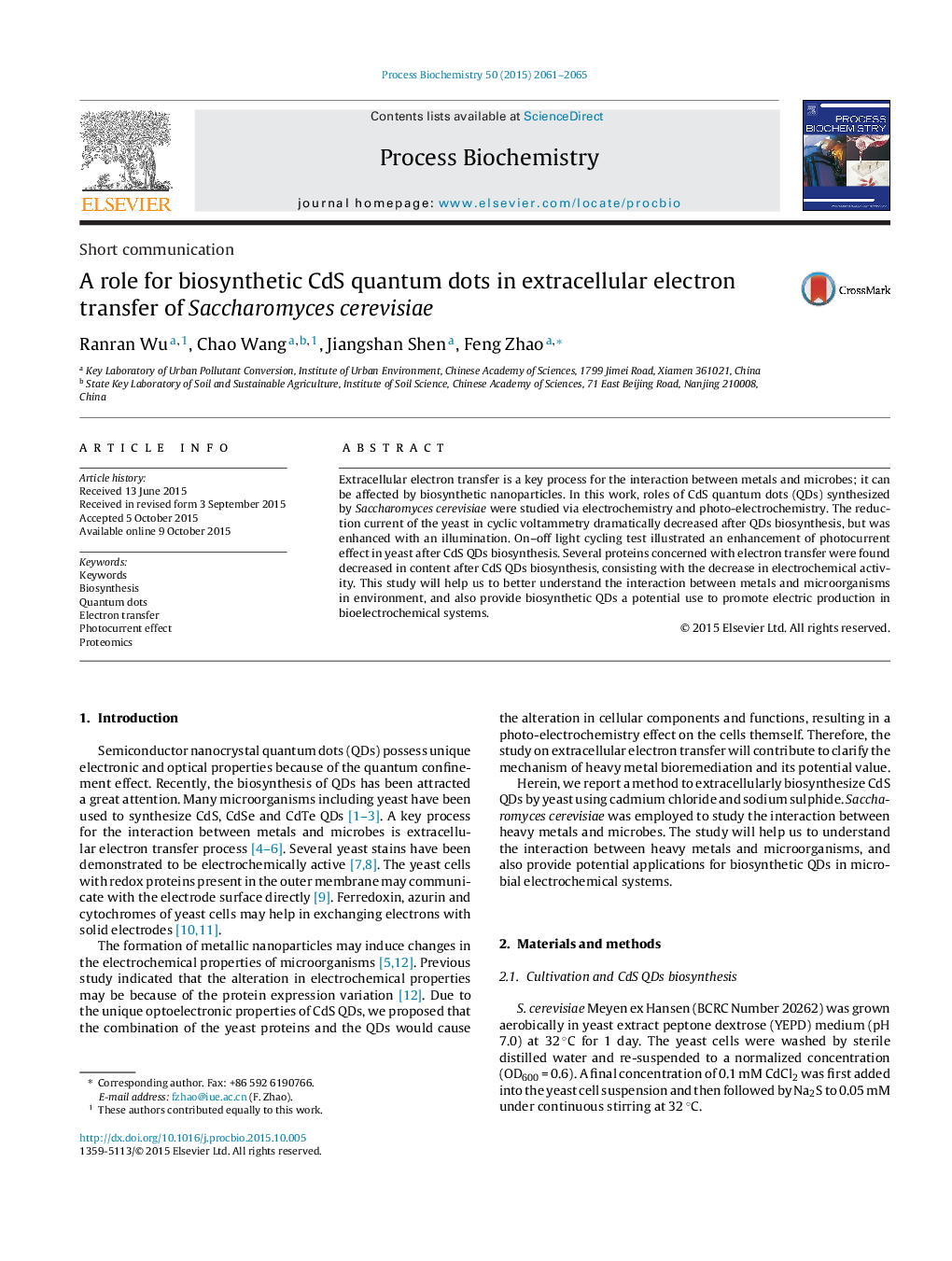| Article ID | Journal | Published Year | Pages | File Type |
|---|---|---|---|---|
| 34197 | Process Biochemistry | 2015 | 5 Pages |
•The reduction peak of S. cerevisiae weakened after CdS QDs biosynthesis.•A photocurrent effect in the yeast was observed after CdS QDs biosynthesis.•Several proteins involved in electron transfer decreased in the process.
Extracellular electron transfer is a key process for the interaction between metals and microbes; it can be affected by biosynthetic nanoparticles. In this work, roles of CdS quantum dots (QDs) synthesized by Saccharomyces cerevisiae were studied via electrochemistry and photo-electrochemistry. The reduction current of the yeast in cyclic voltammetry dramatically decreased after QDs biosynthesis, but was enhanced with an illumination. On–off light cycling test illustrated an enhancement of photocurrent effect in yeast after CdS QDs biosynthesis. Several proteins concerned with electron transfer were found decreased in content after CdS QDs biosynthesis, consisting with the decrease in electrochemical activity. This study will help us to better understand the interaction between metals and microorganisms in environment, and also provide biosynthetic QDs a potential use to promote electric production in bioelectrochemical systems.
Graphical abstractFigure optionsDownload full-size imageDownload as PowerPoint slide
